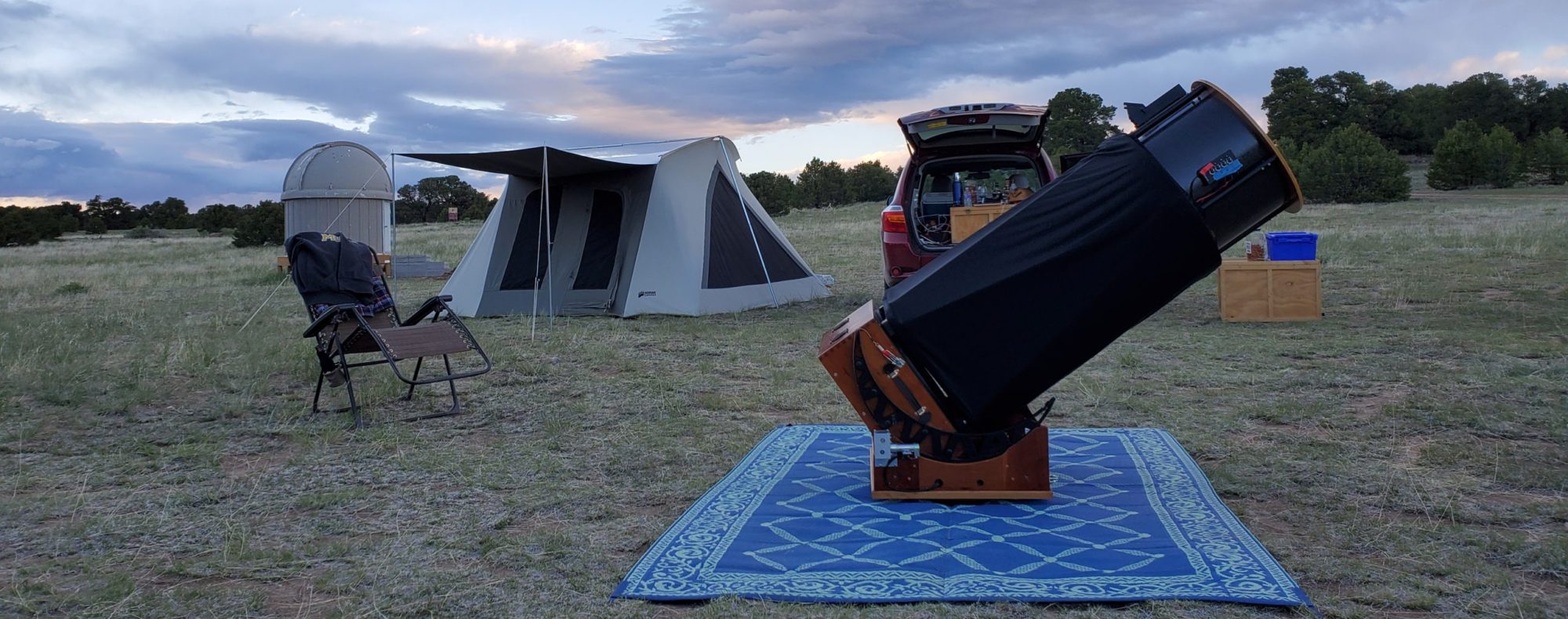With life being dominated by this nasty virus (COVID-19), I decided an escape to dark skies and nature was much needed. Besides, what better social distancing activity is there? Brad and his 8th grade son shared the parking lot with me for a short, 2 hour session.
eat

Okay, so this set up is pretty sad, I’ll totally agree. BUT, given the circumstances, it was just perfect. Social distancing definitely changes the eating and drinking part of the trip the most. For food, I of course brought observing staples; fresh roasted peanuts and sea salt caramels!
drink
Because tonight was very cold, getting down to 25° with a light wind, the huge thermos full of hot chocolate was a welcome treat.
For tasting, I brought along the 12 year Kirk & Sweeney rum, a very fine rum and easy on the wallet. This rum is just delicious, with more than a hint of caramel! Combine this with the caramels I brought, and you’re in for caramel overload. Yum!
astronomy

After setting up my scope, I began the night in Leo with the Astronomical League Herschel II Program object NGC 3067. At high power, this galaxy was bright, clearly elongated E to W 5:1, with two areas standing out as brighter within the galaxy when using averted vision. Although this was a Herschel II object, it would end up being one of the brightest objects I looked at all night!
PGC 28791 – Very small, faint, blinks in and out with averted, almost stellar, elongated N to S, nearby NGC 3067.
PGC 28831 – Small, larger than nearby PGC 28791, very faint, can almost hold the core with direct vision, can see larger halo with extreme averted vision, elongated N to S.

Next I viewed NGC 3071, a surprisingly faint NGC, elongated N to S, small, held with direct vision, with a neat line of 4 similar-brightness, similarly-spaced stars in the FOV at 237x. This line of stars is pictured above, at the bottom left-hand side of the image.
PGC 28856 – Extremely faint, round, seen only with averted, two mag 16! stars seen while hopping from bright mag 9.5 star nearby at 237x.

I continued on with the Herschel II Program and viewed NGC 3659, still in Leo. I noted it was somewhat bright with a round outer halo, brighter core, elongated, and moderately large in size. In the same field at 146x was PGC 35103.
PGC 35103 – Small, faint, elongated NW to SE, hint of a brighter core with a dimmer halo, right next to a mag 14 star.
NGC 3655 – (Not Pictured) – Fairly bright, moderately large, clearly has bright foreground stars within, slightly elongated SSW to NNE.
Six galaxies in one field!

This next view was breathtaking! Six! galaxies in the field of view, all visible without the aid of a camera. Here’s what I saw:
NGC 3681 – Fairly bright, round, moderately large, noticeably brighter core, almost stellar.
NGC 3684 – Large, just smaller than. NGC 3686, similar brightness but higher surface brightness, slightly elongated SE to NW.
NGC 3686 – Large, irregular, dim stellar point within halo, low surface brightness, largest of a trio of galaxies.
NGC 3691 – Moderately large, very even surface brightness with no core seen, elongated SSW to NNE.
PGC 35310 – Extremely faint, small, no elongation seen, round, forms triangle with two other dim mag 15 stars.
UGC 6483 – Extremely faint, barely visible with averted, elongation seen after staring, ENE to WSW, right nearby bright mag 10 star.
Coma Berenices

To end the night, I decided to take a look at one of my favorites, the Needle galaxy in Coma Berenices. I didn’t log this object, having seen it so many times before, but I did decided to hunt down one extremely faint galaxy in the direct vicinity:
UGC 7778 – Dim mag 15 star with some fuzziness around it, very small, very faint galaxy immediately nearby the needle galaxy.
Yes, it ended up being a short night due to other life commitments, but I was really happy to get out under a dark night sky and hunt down some really faint fuzzies all while social distancing!










